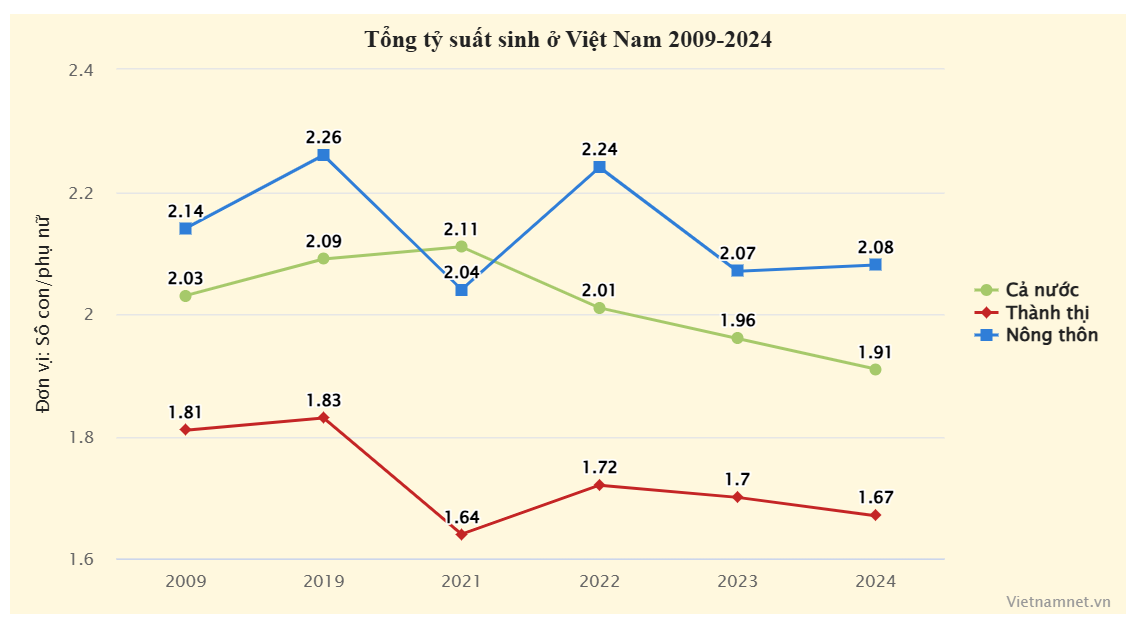Vietnam’s golden population
- 06/03/2025
- Posted by: Thao Tran
- Category: Blog

For a quickly developing country such as Vietnam, its relatively young workforce is a real strength. This workforce has played a crucial role in driving the country’s rapid economic recovery after the covid-19 pandemic. Furthermore, Vietnam is currently experiencing strong economic growth through technological- and scientific innovation. It is confidently entering the “smart era“, and it is ready to compete in the international market. However, how much longer may Vietnam lean on its “golden population”? And is Vietnam not at risk of “getting old before getting rich”? In this blog post, we are having a look at Vietnam’s demographics and how it influences the country’s economic development.
What is a golden population
In January 2025, during a conference labor statistics, the General Director of the General Statistics Office (GSO), made several interesting remarks. First of all, she said that Vietnam’s population is now more than 100 million, making it the 16th most populous country in the world. Secondly, she mentioned that Vietnam is currently in its “golden population period”. Now what does that mean exactly: golden population? According to the United Nations Fund for Population Activities (UNFPA), this is a period when the working age population group is 2x as high as the dependent age group. People often refer to this as “golden period” or the “period of opportunity”.
The golden population period for Vietnam began in 2007. Generally speaking, economists estimate that a country’s golden population period typically lasts 30-35 years. However, with an appropriate birth rate, this period could be extended to 40-50 years. For Vietnam, experts expect that the period may end around 2036 – 2039. This means that Vietnam currently has a significant advantage, one that it should try to capitalize on. Its strong and youthful labor force should be capable of propelling the economy forward. Provided of course that this valuable resource is fully utilized. Several Asian countries, such as Singapore, Japan, South Korea, and more recently China, are already harnessing the potential of their golden populations to achieve remarkable economic growth.

How to make this period “golden” indeed
Simply having an abundant labor force does of course not guarantee economic success. For example, effective macroeconomic policies are also needed to create many employment opportunities. Additionally, there must be coordination between education and vocational training. This is to equip society with a highly skilled workforce capable of adding high value to the economy. Such synergy is critical for economic benefits. A young workforce can only thrive when the right policies are in place, allowing them to contribute their talent, creativity, and innovations, thereby adding value to society. Conversely, a lack of sufficient jobs or jobs that offer low value will result in wasted human resources. More concerning, unemployment could become a significant burden on social welfare, hindering national development.

Vietnam’s economic growth
Vietnam’s economy is experiencing impressive growth since the country entered its golden population period in 2007. According to recent reporting from VnExpress, Vietnam’s per capita GDP in 2024 amounted to USD 4,700. Compared with USD 840 at the start of the golden period, this is almost 6 times higher. The average GDP growth rate during 2007-2022 was 6.1%, with a sharp dip in 2020 and 2021 due to covid. In 2007, Vietnam’s GDP was around USD 77.4 billion, ranking 59th globally. In 2024, it rose to USD 476.3 billion, entering the top 35 in the world. Also the outlook for 2025 and beyond is looking good. However impressive as this may all sound, it is still not sufficient to propel Vietnam into the ranks of upper middle income countries. Because according to the World Bank, Vietnam classifies still as a lower middle income country.

The end of the golden population in sight
According to the Ministry of Health, as reported by Vietnamnet, Vietnam’s overall birth rate has steadily declined in recent years. In urban areas the rate is now 1.67 child per woman, which is a (slight) drop for the second year in a row. In rural areas, the rate went up a little bit in 2024: 2.08 children per woman. However, looking at the country as a whole, the birth rate keeps coming down. In 2024 it was 1.91 child per woman, a decrease of 2.5% compared with 2023. This trend reflects changes in family priorities, lifestyles, and social values.
For example: urban women tend to marry later and are less likely to have children. One reason is that the “best time” to have children (i.e. during peak physical health) often coincides with career-building years. Furthermore, economic pressures and high expectations for their children’s futures contribute to many couples choosing to have only one child for better upbringing. Experts estimate that, if the declining birth rate continues, Vietnam will exit its golden population period by 2039. After 2054, the population will begin to shrink annually. Developments such as a declining birth rate and an ageing population may logically place a greater burden on the economy and the social welfare system.

Lessons from other countries
Several other countries in the region, such as Japan and South Korea, are already dealing with similar challenges. These countries offer real life case studies which that Vietnam may use to prepare itself for a shift in demographics. In those countries, various policies have been implemented to encourage higher birth rates or maintain existing levels. Examples include: maternity leave, cash incentives for childbirth, subsidies for early childhood education, increased childcare facilities, and housing support. Meanwhile, it is reported that Vietnam considers relaxing its two-child policy amid its declining birth rate.
Additionally, local governments have developed tailored approaches to address regional birth rates, encouraging or discouraging births in alignment with national priorities. The hope is that through long-term stability, harmonious living, and the shared goal of a prosperous nation, Vietnam can strike a balance that supports both its citizens and its development. With the advancement of science and technology, a clear economic vision, and the application of scientific methods to increase value-added production, Vietnam hopes to make the most of its golden population period to propel the country into the ranks of developed nations.

VNHL is here to support you
At VNHL, we closely follow the news and the latest developments regarding Vietnam’s economy. This includes topics such as the Vietnamese labor market, GDP growth, and demographics. Whether you are considering starting your own business, or whether you are looking to hire more skilled labor for your existing business: we are here to help. With our consulting, networking, and supporting services, we aim to give you a clear picture of how this vibrant country is moving forward. Do not hesitate to contact us, we are ready to listen, share, and support you.

*Dear reader, even though our VNHL Consulting team always tries its very best to provide its Clients with correct and complete info: we are not a Vietnamese law firm. The information in this post is therefore not meant to, and should also not be construed to, constitute legal advice. For specialized advice in the fields of law, accounting, tax, etcetera: we always recommend our Clients to speak with qualified specialists in those fields. We have several such specialists in our nationwide network, and we are always happy to introduce our Clients to them, when appreciated.

